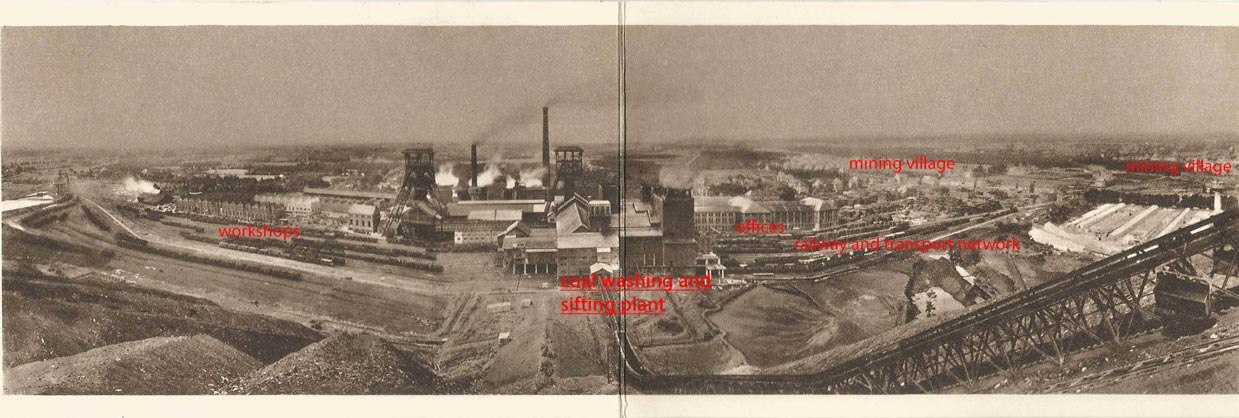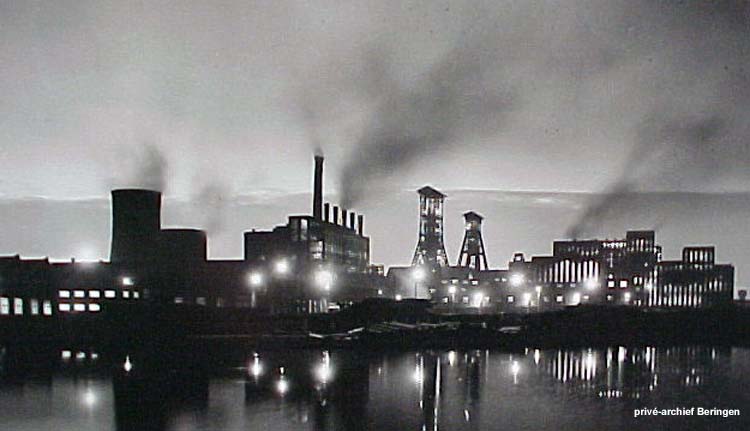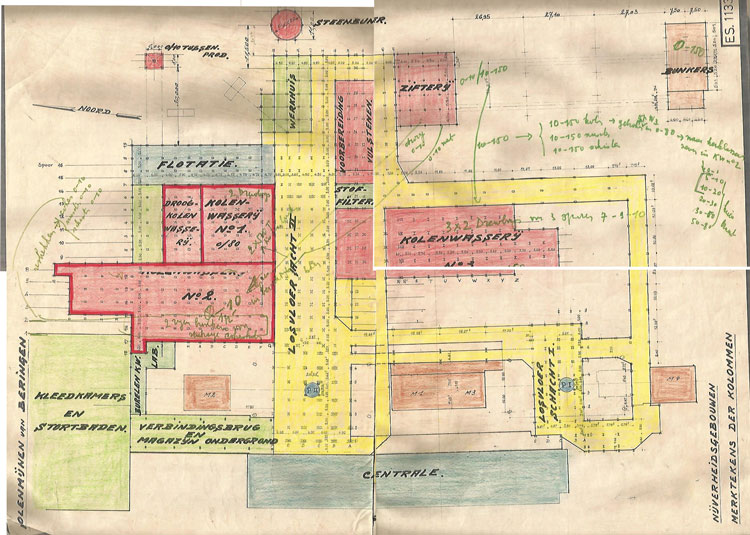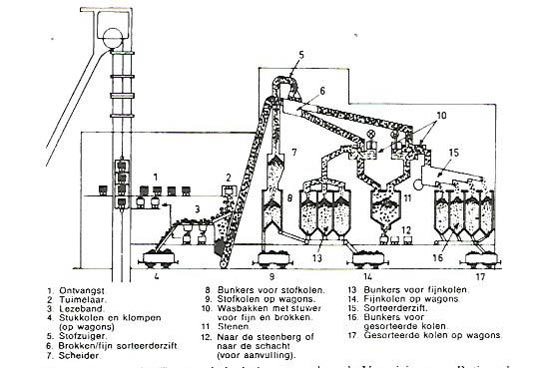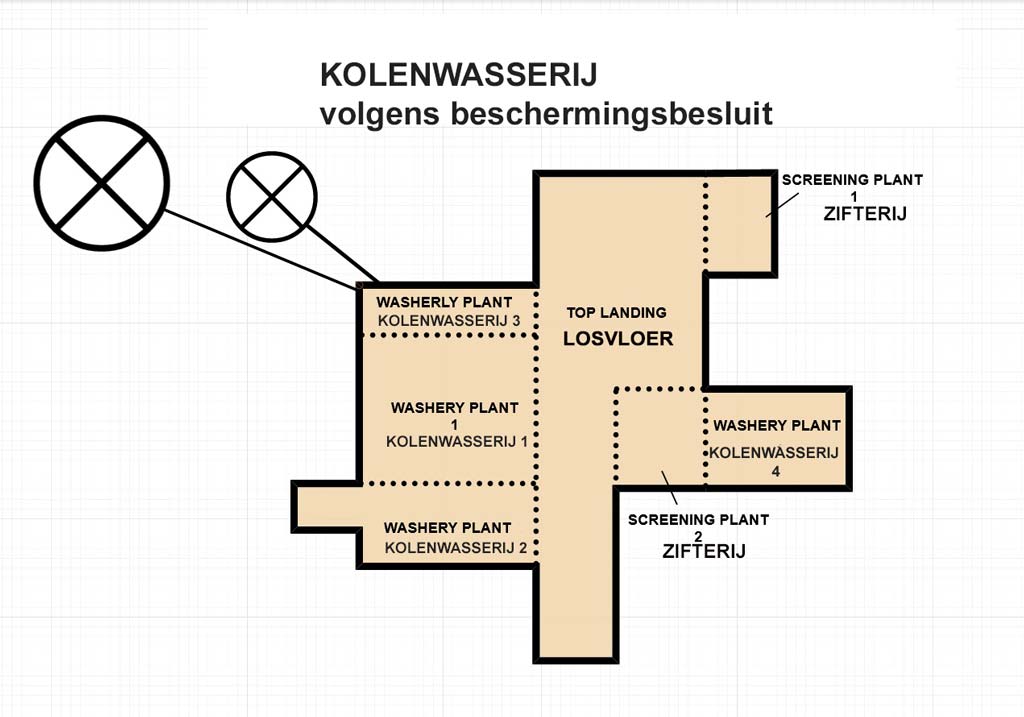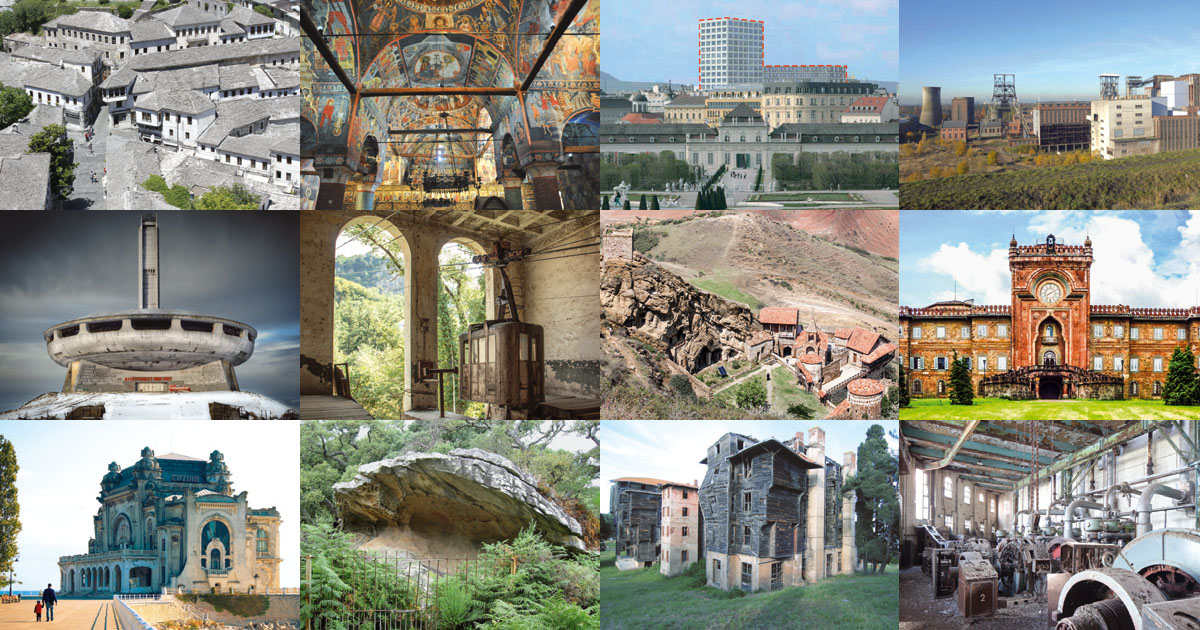The coal preparation plant in Beringen on the 7 Most Endangered shortlist
SAVE the coal preparation plant of the Beringen coal mine
on the shortlist for the 7 Most Endangered sites in Europe

>>>> sign the petition to save the coal washing plant of Beringen
|
|
The Beringen coalmine and its coal washing and sieving plant The Beringen coal preparation plant is part of the Beringen mining site, a large former coal mine in the province of Limburg. This coal mine is an important example of the large-scale developments in coal extraction that took place in Europe and the rest of the world in the 20th century. The building of this large coal preparation plant started in 1923-1924 (coal sifting and washing plant n° 1) and was later enlarged (plants n°s 2, 3 and 4). |
The Beringen mine and the four components of the coal preparation plant were protected as an Historic Monument in 1993 - 1994 by the Flemish Government.
When the Limburg mines closed, the Flemish Government decided to keep at least one mine as completely as possible. This became the Beringen mine because most relevant buildings and installations were still there. The coal mine of Beringen was legally protected on 22 December 1993. It was was and is the largest protected zone in Flanders. At that moment it was the largest protected mining site in Europe too.
On December 19, 1994, the coal preparation plant, all its four components were also legally protected as a monument: "de kolenwasserij en -zeverij inclusief het toebehoren; dit alles met inbegrip van de uitrusting onroerend van aard en/of bestemming [...] o.a. leidingen, verbindingen, passerellen, transportbanden, machines, werktuigen, alle toebehoren inherent aan de werking, zoals mechanische, elektrische, elektro-mechanische, elektronische, hydraulische onderdelen, controle- en regeltoestellen, enz..." (the coal preparation plant including all the accessories, including the equipment [...] including the pipes, connections, passerelles, conveyor belts , machines, tools, all accessories inherent to the operation, such as mechanical, electrical, electro-mechanical, electronic, hydraulic components, control devices, etc ...)
This should safeguard a unique complex for the future. Flanders and the policy of the Flemish Governement by then was seen as a model and and example to follow for other mining regions in Europe.
Since coal preparation plants are often the first to be demolished after a mine closure, there are not much of them left in Western Europe. With its equipment still in place, this is a very rare example of such plant preserved on a European and even on a global scale.
Protection as a monument implies that the owner must keep the building in good condition and take all measures to prevent decay.
Protected buildings must also not be demolished - and demolition of large parts of a protected building simply contradicts all the principles of monument conservation.
We would like to point out that for (parts of) protected buildings no demolition can be allowed without (partial) lifting the protection, and that the procedures required by the Flemish Law on Immovable Heritage - the 'Decreet Onroerend Erfgoed'. This includes a public inquiry and advice from the 'Vlaamse Commissie Onroerend Erfgoed' (Flemish Immovable Heritage Commission). This procedure was not used until today, let alone followed.
If this does not happen, a procedural error can be invoked, if necessary before the Council of State
Redevelopment of the mining site
Due to the size of the redevelopment project (more than 150,000 sq.m floor space), a PPP structure (Public-Private Partnership) was chosen.
Following a call for tenders, in 2009 the redevelopment of the mine was assigned to PPP company, BE-Mine, with the main partner being LRM (the Limburg Reconversion Company - a company set up and controlled by the Flemish Government) together with a number of construction and real estate companies. Meanwhile, a new destination has been found or under development for most of the mining buildings. The redevelopment of the mine is going on, new houses being built, sports and tourist facilities and shopping being developed on the mining site and in the buildings.
But apparently the coal preparation plant is a hot issue.
For three of the four sections there is no destination - and the investors and also the government are frightened of the costs that are being put forward. BE-Mine and LRM concluded that the maintenance of the complete coal preparation plant would not be possible and decided - without a thorough study of the building history - on the imminent demolition of coal preparation plants n°1 and 3. On the site of coal preparation plant n°1 probably a car parking would be installed.
Apparrently the principles are applied more 'flexible' to industrial buildings than to what can be called 'traditional' historic building. At present a proposal has emerged to demolish large part of the coal preparation plant,keeping less than half of it - argueing that by doing this the historic value of the building would not be lost (sic). For a protected neo-Gothic church one does not even dare to propose demolishing the largest part of the nave, while leaving the side aisles, the sacristy and part of the tower... explaining that the church was too big, too expensive and that the solution choosen was the best 'heritage' solution to apply...
Just before the summer break, the PPS company BE-Mine applied for a demolition permit for coal preparation plant n° 1. It was also announced that once this coal preparation plant n°1 had been demolished, the procedure to demolish plant n° 3 would be started. Although there seemed to be a political agreement about the demolition, the legal protection of the building has not yet been lifted and apparently the request for demolition does not take this into account.
In mid-October the demolition permit was refused by the Beringen town council, because of the heritage value of the building and its protected status. The PPP company, however, appealed to the province of Limburg, which now has to study the case and decide before 1st of March 2018. Meanwhile, there is a lot of political pressure and lobbying going on to obtain the demolition permit.
The demolition of a large part of this legally protected building ignores the importance of the integrity of a historic building. The demolition of the first part could create a dangerous precedent for further damage and destruction, leading to the loss of the value of the entire plant. It will also create a dangerous precedent for other protected buildings in Flanders, if one is permitted to demolish part of a historic monument without obeying to the legally prescribed procedures.
We can regard this as an ominous signal at the start of the European Year of Cultural Heritage 2018.
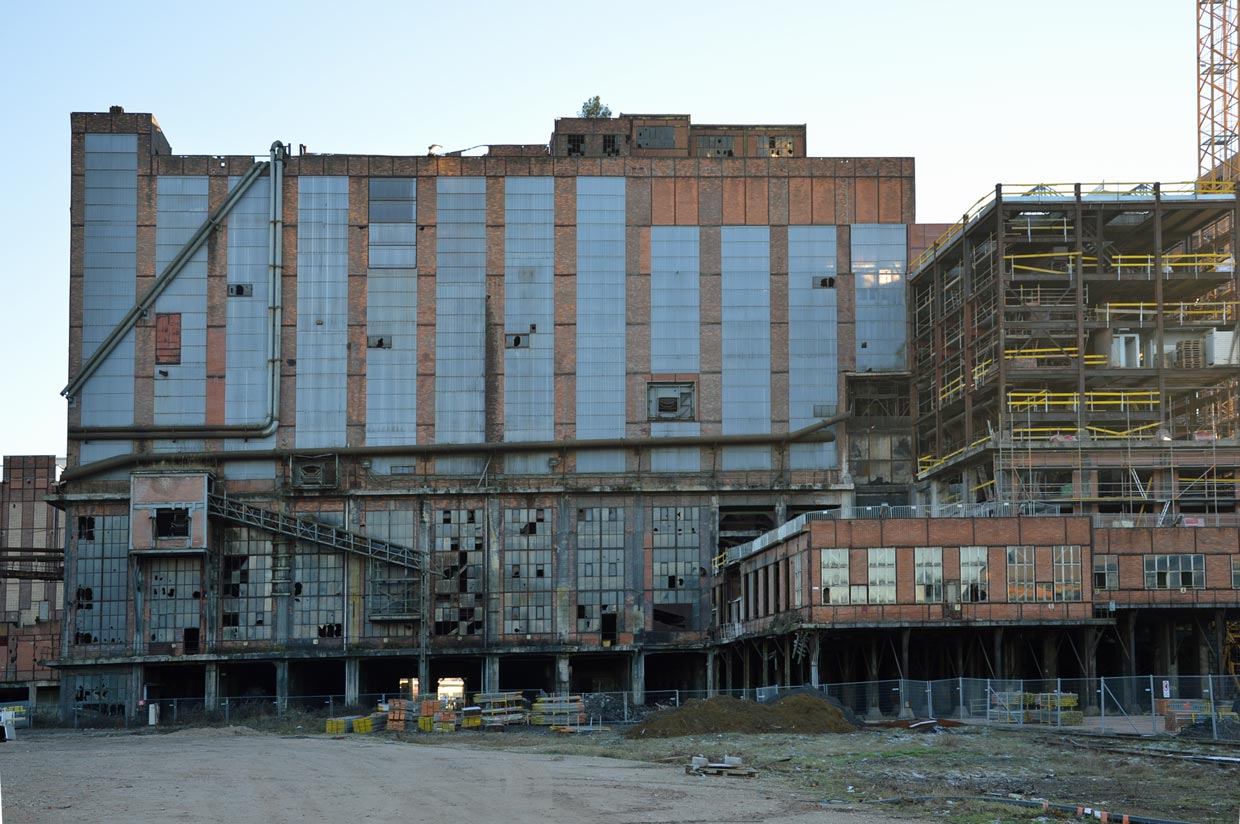 coal preparation plant - actual situation |
 coal preparation plant - actual situation, side facades of plant n°1 and n°3 |
|
|
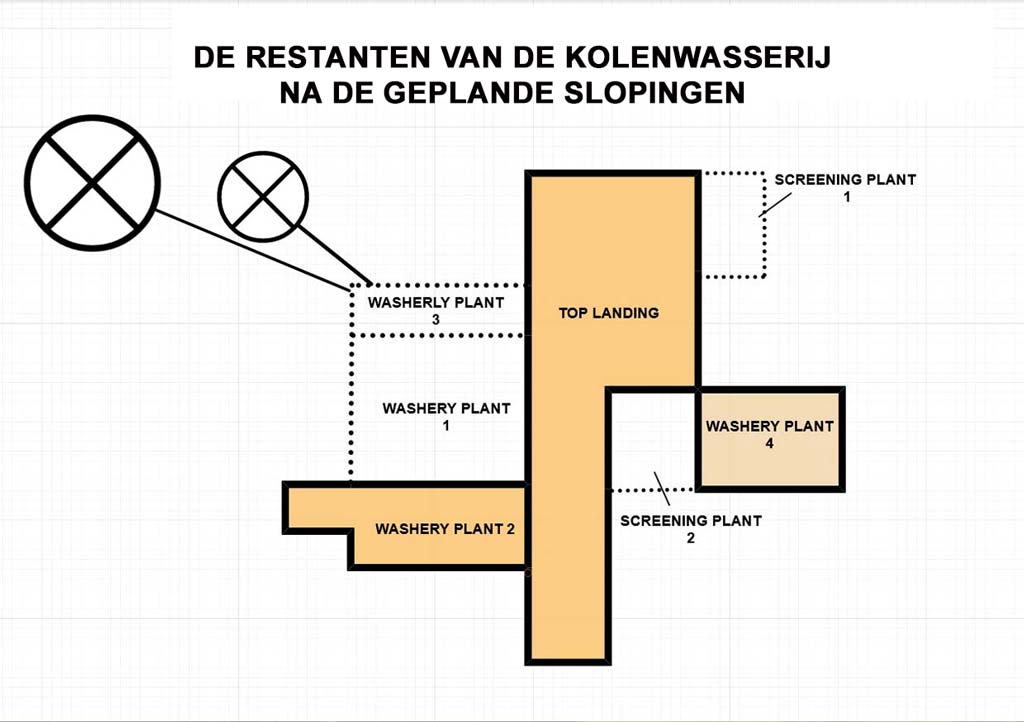 what will remain after the demolishing |
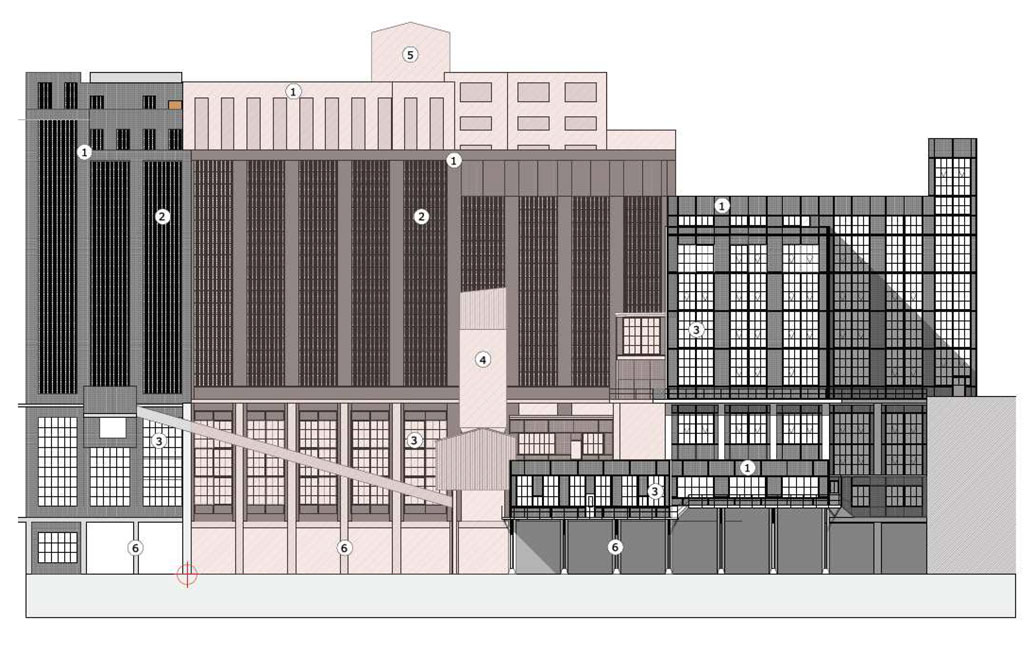 the situation at present, indicating the protected area |
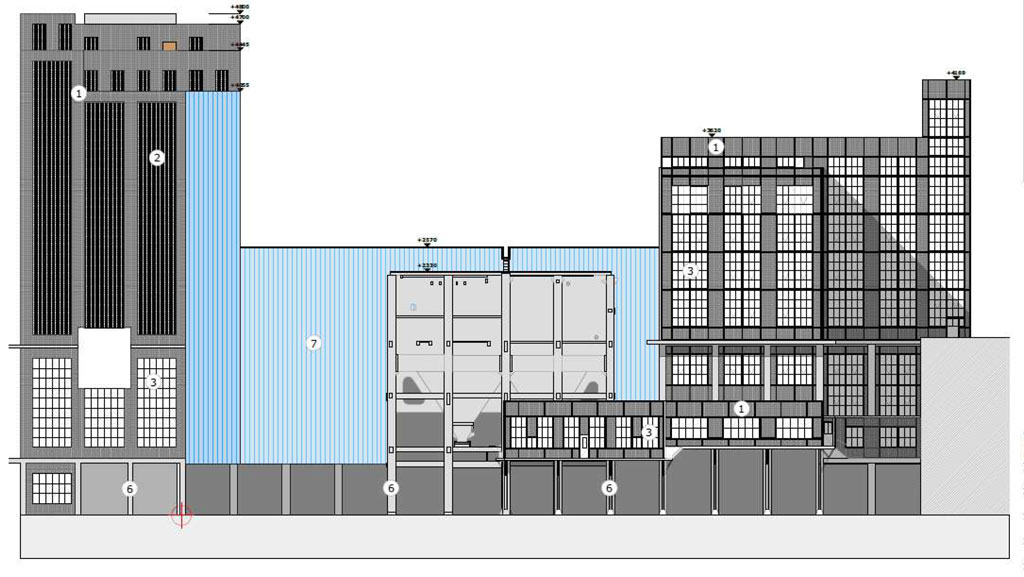 what will remain after the demolition |
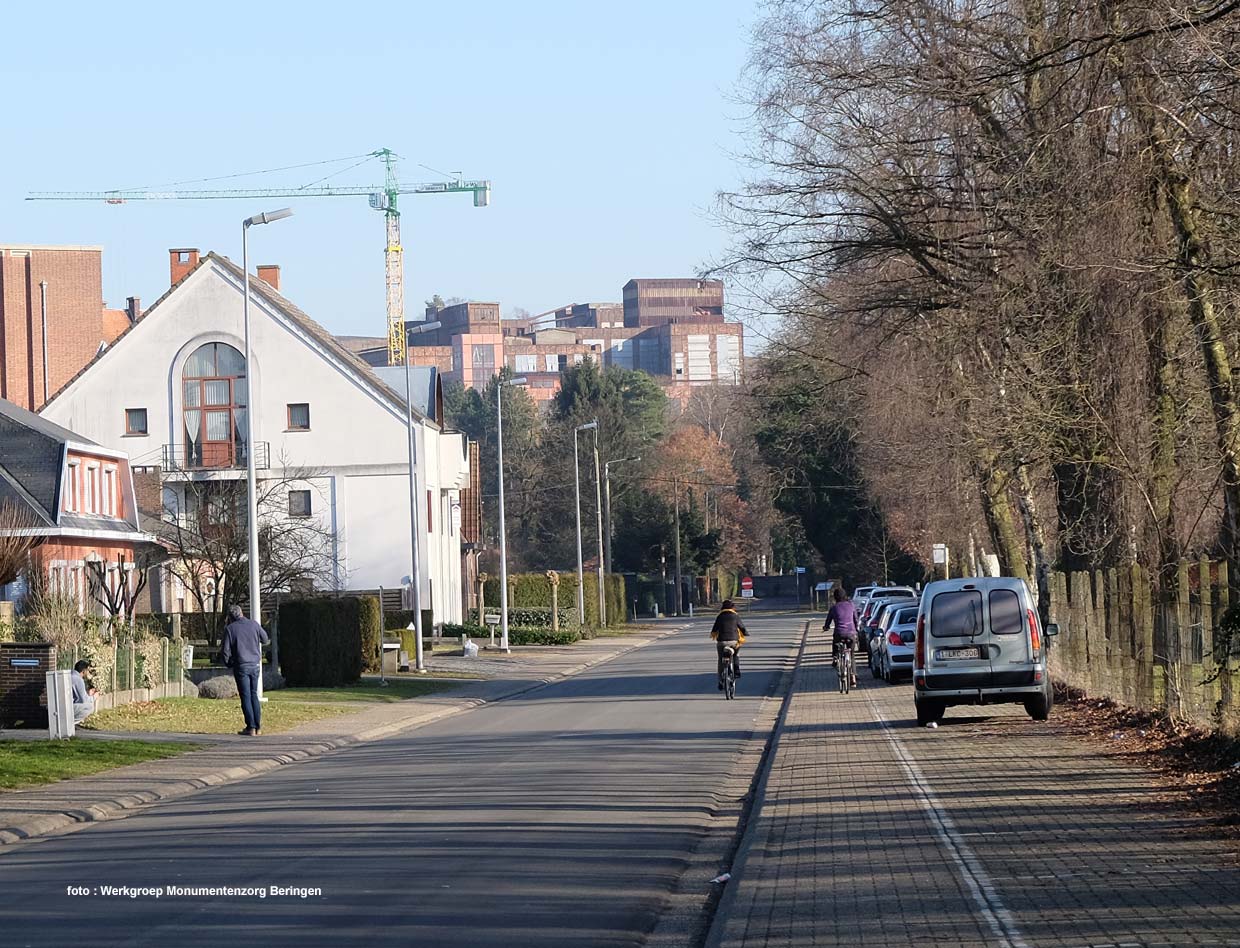 The surroundings before.... |
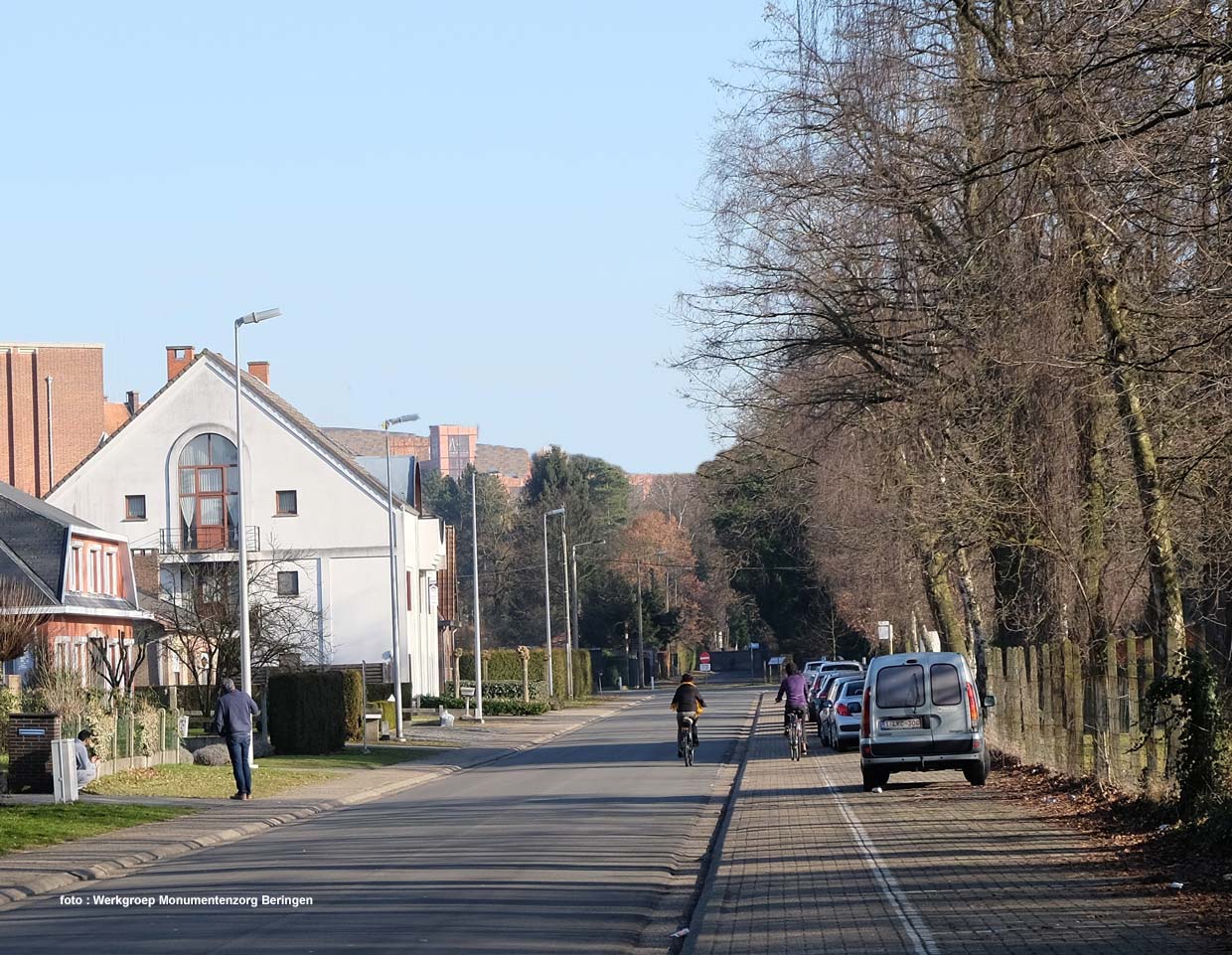 and after demolition of the coal preparation plant |
As from 2013 fear rose that the coal preparation plant could be endangered, and local groups called public authorities not to allow its destruction.
In 2016 at the annual Flemish-Dutch meeting on industrial archaeology in the former mining town of Kerkrade (Dutch province Limburg) the participants, individuals and associations unanimously voted a motion calling the authorities to saveguard the complex and since the 'Vlaamse Vereniging voor Industriële Archeologie' (VVIA, Flemish Association for Industrial Archaeology) took a clear stand for the integral preservation of the dominant and legally protected coal washing plant of the former coal mine of Beringen
In June 2017 the VVIA presented a dossier to the European campaign The 7 Most Endangered
THE 7 MOST ENDANGEREDAt the opening of the European Year of Cultural Heritage, Europa Nostra, the leading heritage organisation in Europe, and the European Investment Bank Institute announce the 12 heritage sites shortlisted for the 7 Most Endangered programme 2018 by a panel of experts in various fields.
The shortlist was announced on Januray 16th - coincidentally on the same moment the province of Limburg discussed whether or not the demolition permit should be granted. For the shortlist see also: |
We will continue the battle to save this complex.
But we do need EVERYBODYs support
and we have launched an international petition which we ask you to sign
We ask the Minister, and all services and institutions involved in the decision-making process
1) not to grant a permit for the demolition of any parts of this unique building complex
2) not to lift or modify the protected status of the coal preparation plant in order to facilitate the demolition (of parts) of the building
3) to protect the buildings from decay and to keep them intact, and at the same time to carry out a serious architectural and feasibility study for the re-use, interpretation and re-evaluation of this coal preparation plant. We propose, among other things, to launch a European ideas competition for this building
4) to find the necessary funds for this and make them available.
- sign the petition to save the coal washing plant of Beringen (English version)
- signez la pétition pour sauver le lavoir du charbonnage de Beringen (version française)
|
and on April 13-15th For more information, the registration forms and the call-for-papers visit the website come, join the meeting - and admire the coal preparation plant |
Go to
- the website of the Vlaamse Vereniging voor Industriële Archeologie vzw
- the website of EFAITH - European Federation of Associations of Industrial and Technical Heritage
- the weekend of mining heritage associations
